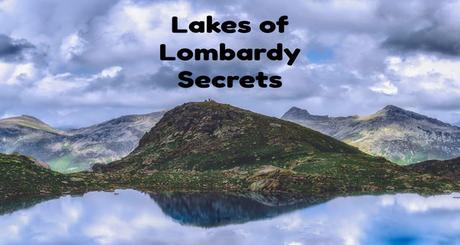
They have seen the birth of prehistoric forms of life and civilisations, defended Italy from the threat of invasion and fascinated poets and writers. Lakes of Lombardy are a wealth of history just waiting to be discovered, either on a trip around their banks or a journey into the surrounding area.
Lakes of Lombardy Secrets - Lake Garda
An inland branch of the Mediterranean sea for many centuries, the upper Garda Lake is the northernmost part of a large citrus-producing area. Terraced crops and facilities protecting the plants during winter were first introduced in the Thirteenth century and impressed Goethe during his Italian Journey at the end of Eighteenth century.
Scattered in the territory around the municipalities of Limone, Gargnano and Maderno, these old lemon crops, or what is left today of the old facilities, pay witness to a long history of work, skilfulness and impressive results.
The large greenhouse on the lake shore is of great architectural and landscape interest. In Limone, a special lemon crop called Limonaia del Castel, situated under the rocks of Mount Sughera is also worth a visit.
Gabrielle D'Anunzio, Italian writer and poet, had the merit of making the Limone del Garda village accessible by road. Until 1931, it could only be reached on foot or by boat, he was the main advocate for the construction of Gardesana Occidentale road.
Limone is also the birthplace of a saint, San Danielle Comboni, whose house can still be visited to get an inside of the work of missionaries. Walking through the village narrow alleys you will come across San Pietro's church, a patron of the place since the Ninth century.
Tremisone overlooks the lake from above on an extensive plateau and resembles more an alpine village than a lake town. The Terrazza del Brividio is not to be missed, a panoramic terrace suspended at a height of 350m over the lake surface.
Formaggella di Tremisone - is a kind of soft cheese with a fragant taste and a delicate smell of mountain prairie, it is cured in rooms with selected mildews types.
Valvestino is a border and transition land, which was been inhabited since prehistory, during World War I was under Austrian rule. The barns with thatched roof of Cima Rest and Denai are worth visiting for sure.
A must-visit in Toscolano Moderno is the Valle delle Cartiere, eroded by the river that in medieval times was used to power the factories producing the handmade paper that was famous all over Europe. On the way back around the lake, there is the Basilica Sant'Andrea with its mabel multi colour facade.
Another must-see in the old town is the late Gothic Cathedral built between 1453 and 1502 on the site of an older building. Not far away, the recently inaugurated Mu.Sa. is also worth a visit, opened in 2015 this museum explains the town identity.
Nestling between the lake and hill, Gardone Riviera enjoys a particularly favourable micro-climate for plants, which have turned the town into a large botanical garden. Visitors must see the Heller Garden, where three thousand botanical species from all over the world grow.
Ideal for families, Manerba beach is the biggest and best known in the area. It offers water sports and shady areas under the trees behind the lake. Olive trees are documented to have grown around the lake since Roman times.
The lower Garda has a wealth of historic sites, with roots dating back as far as the Bronze age. The remains of a sumptuous villa known as the Grotte di Catullo are in exceptional panoramic position, right at the far end of the Sirmione peninsula.
Built for strategic purposes at the end of the thirteenth century, Rocca Scaligera in Sirmione is one of the best preserved castle in Italy. A Roman and medieval museum of stone is housed in the castle's large inner portico, given the most important information about the fortress.
The remains of the Roman villa in Desenzano are the most important evidence of the great villas of late- Antiquity in Northern Italy. It shows reconstructions and fragments, as well as kitchen and eating pots and small bronze utensils. In Desenzano castle there is also a small arena for historic re-enactments.
The northern tower of Soiano castle, a quadrangular fortification that stands out for its very high walls, offers an extraordinary view of the lake. Parco del Risorgimento evokes the battle between Austrian and Piedmont armies in the second Italian War of Independence (24 June 1859).

